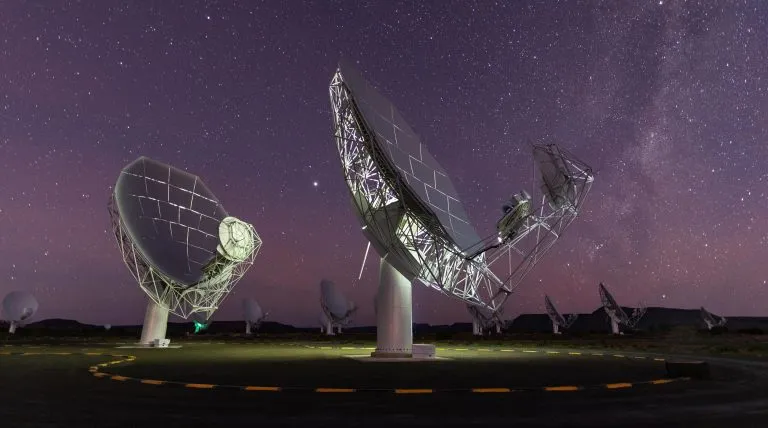An international team of astronomers discovered a strange neutron star that emits radio. Its rotation speed is extremely slow. It completes rotation every 76 seconds The research team said that this was an unusual discovery because it was located in the neutron star "graveyard", where they did not expect to see any radio emissions. This discovery was made with the meerkat radio telescope in South Africa and was published in [Nature astronomy] on 30 may 2022( https://www.nature.com/articles/s41550-022-01688-x ) 》In magazines. The study was led by members of the meertrap (more transients and pulsars) team funded by the ERC of the University of Manchester.

This was initially discovered by meertrap instrument from a single flash or pulse, and carried imaging observation led by another team thunderkat. Meertrap and thunderkat then worked closely together to clarify their sources. By combining the data of the two groups, it is possible to confirm the pulsation and obtain the exact location of the source, so that detailed and more sensitive follow-up observations can be made.
Neutron stars are extremely dense remnants of supernova explosions of massive stars. They can generate radio beams that sweep across the sky with the rotation of neutron stars, producing regular flashes, just like the "Lighthouse" of the universe. Scientists now know that there are about 3000 such neutron stars in our Milky Way galaxy. However, this new discovery is different from anything seen so far. The research team believes that it may belong to the category of ultra long period magnetic stars with extremely strong magnetic field in theory.
Dr. Manisha Caleb, who led the research, said: "it is surprising that we only detected radio emissions in 0.5% of the rotation period of the source. This means that the intersection of the radio beam with the earth is very accidental. Therefore, there are probably many sources with very slow rotation in the Milky way, which has an important impact on the birth and age of neutron stars."

"Most pulsar surveys do not search for such a long period, so we do not know how many such sources may exist. In this case, the source is bright enough that we can detect a single pulse with meertrap instrument of meerkat."
The newly discovered neutron star is named PSR j0901-4046, which shows the characteristics of pulsars, (ultra long period) magnetostars, and even fast radio bursts. Although the radio energy produced indicates the origin of pulsars, pulses with chaotic sub pulse components and pulse polarization are reminiscent of magnetic stars.
Although the spin period of PSR j0901-4046 may be more consistent with the white dwarf, another type of star residue that is not extreme, scientists have not seen any multi wavelength support. It is not clear how long this source has been on the radio. It was found in a well studied part of the Milky Way galaxy, but radio surveys usually do not search for such long periods, or pulses lasting more than tens of milliseconds.

Lead researcher of meertrap project Professor Ben staplers of the University of Manchester explained: "The radio emission of this neutron star is different from anything we have seen before. We can see it for about 300 milliseconds, which is much longer than that of most other neutron stars that emit radio. It seems that there are at least seven different pulse types, some of which show strong periodic structure, which can be explained as the seismic vibration of the neutron star. These pulses may make us understand the nature of the emission mechanism of these sources Have an important understanding. "
"The sensitivity provided by meerkat, combined with the possible complex search of meertrap and the ability to synchronously image the sky, make this discovery possible. Even so, a pair of 'eagle eyes' are needed to identify it, because it looks so unusual and may be a real source!" Dr Ian Heywood, from the thunderkat team and the University of Oxford, said he had cooperated in the study.
Detecting similar sources is an observational challenge, which means that there may be a larger undiscovered group waiting to be discovered. This new discovery increases the possibility of the existence of a new class of radio transients -- ultra long period neutron stars, which indicates that it may be related to the evolution of highly magnetized neutron stars, ultra long period magnetic stars and rapid radio bursts.